
The coming year promises to be an incredible moment—or, perhaps just as likely, an incredibly disappointing moment—in videogame history. Anticipation is feverish, and so much is at stake: The next eleven months will establish the course videogames take, for good or ill, for a console generation to come.
The majority of 2016’s scheduled releases are set to tread already-well-worn territory. Dusty classics like Day of the Tentacle and Zelda: Twilight Princess are primed for their high-definition facelifts. Meanwhile, beloved one-off fan-favorites like Odin’s Sphere, Bravely Default, Dishonored, plus The Banner Saga, Gravity Rush, and Mirror’s Edge, are all (!) finally getting some overdue sequel love. And established franchises will continue to receive gleaming coats of paint: a new installment of Far Cry, a new Uncharted, a Hitman prequel, a new Yakuza, new Dark Souls, new Gears of War, a new Mass Effect, another Street Fighter… 2016 is shaping up to be, if nothing else, a year of sparkly rehashes.
But it isn’t all HD remasters and sequels. At long last, VR is poised to loose itself into the consumer mainstream. Valve and Nvidia are vying to introduce new, intuitive ways of streaming videogames to every room in the house. Independently-developed titles like Below and Night in the Woods could well advance videogames as a narrative medium. Videogames enthusiasts have a lot to genuinely get “hype” about.
If 2015 were disappointing, it’s because the games industry was maintaining its holding pattern, circling the PlayStation 4 and Xbox One with uncertainty, never quite diving in to make good on the promise of last year’s technology. This year, that’s destined to change. But will developers and publishers stick the all-important landing?
Here, in no particular order, are the ten games scheduled for a 2016 launch that fill me with hope (and trepidation):
The Witness
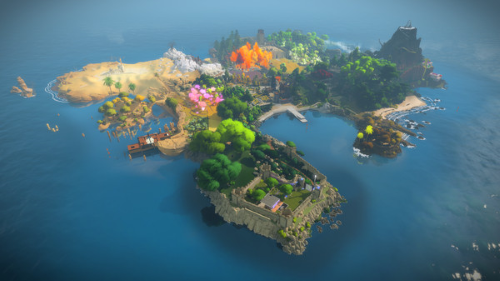
Braid is a lot like the movie Memento, for me—not because of the wonky bizarro time-reversal stuff, but because Memento is one of those things you really enjoyed in the moment, and now, in retrospect, you’re second-guessing your own taste. “Was the movie that good?” you might wonder. And then you finally sit down to rewatch Memento and you’re like, oh, thank God, it really is as good as I remembered—maybe even a little bit better than I first gave it credit for, actually.
Whether or not you’re excited about The Witness hinges on how you remember Braid. If you’ve replayed it lately, you might breathe a sigh of relief: Oh, good, Braid really is amazing. Oh, good, there’s a decent chance Jon Blow actually knows what he’s doing.
Blow has invested something like eight years’ labor on his sophomore effort—meaning there’s a strong likelihood The Witness will flop harder than New Coke. (Things that take too long to bake have that unfortunate tendency to defy expectations in the worst possible way.) But for my own part—and I’ve thought about this for a long time—I’m pretty sure I trust Jon Blow as an artist.
So I’m anxiously optimistic. We’ll know whether that confidence were misplaced in just a day or two.
Mirror’s Edge Catalyst
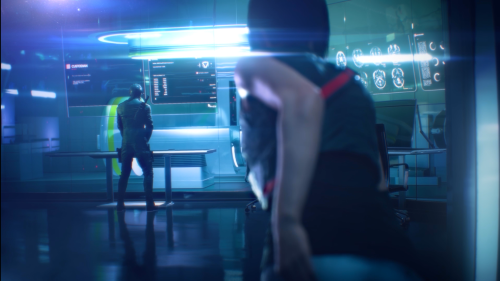
The original Mirror’s Edge (2007) was a thrumming, gut-churning experiment in first-person action—and, at least for now, the only entry in the nascent “parkour” genre. Glossy and disorienting, Mirror’s Edge put the player in the sporty, Sonic-red sneakers of protagonist Faith Connors, who is tasked with outrunning armed enemies (the game tacitly penalized the player for ever using a gun, which was refreshing in its own odd way).
Mirror’s Edge Catalyst, a prequel, pledges to flesh out Faith’s backstory—which, given the resounding success of the latest Tomb Raider games, seems like a pretty obvious direction to choose. I’m not sure it’s the best decision, though; elements of “human interest” aside, protagonists tend to get a lot more mileage out of being “glyphs.” But fans have been hungry for more Faith Connors these past several years, so, hey, why not go for broke and give us more Faith than we can conceivably handle?
Dedicated players have already managed to get the original Mirror’s Edge running with the Oculus Rift; this, by every account, is a mind-meltingly harrowing experience. Will Catalyst support native VR? One can only dread. My stomach is excitedly braced for the worst.
Zero Time Dilemma
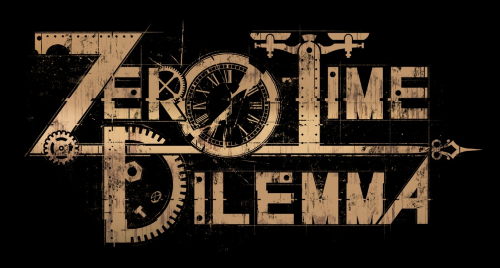
The visual novel 999 was frustrating, tedious, but also hugely innovative. And it was effective! For being so text-heavy, it was unusually creepy! Its excellent follow-up, 2012’s Virtue’s Last Reward, only improved on the original, scoring with critics and fans alike. Mashing up the best of Japanese sci-fi and horror thrillers—the plot is evocative of both Battle Royale and Liar Game—the Zero Escape series was a breath of fresh air for handheld-console devotees.
But visual novels are seldom viable commercial successes, and poor sales halted production on the third entry in the Zero Escape series—until late last year, when Zero Time Dilemma was re-announced. (If the game itself weren’t enough of a love letter to fans, there’s also this watch. As the kids say, “Take my money.”)
Crackdown 3
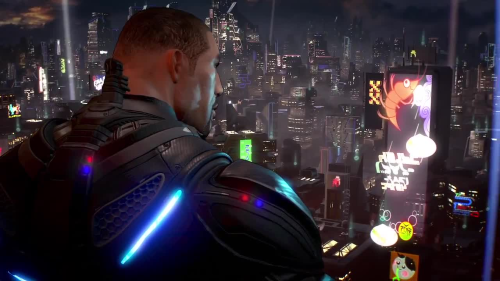
The less said about 2010’s addled Crackdown 2, the better. But the original Crackdown (2007) was a shoot-’em-up, smack-’em-down, blow-it-all-up joyfest—as well as an accidental critical and commercial hit. The story itself had something to do with something-something cyberpunk dystopian police-state-something, all in service of tenuously explaining why your meathead avatar (or “Agent”) is able to leap tall buildings in a single bound. To summarize the plotline, in short: Whatever.
Crackdown excelled at making the player feel powerful, turning every level-up into a thing of giddiness. Once your Agent’s abilities were maxed, the game was somehow even more fun: You absolutely owned Pacific City. The game’s outlandish side missions, non-linearity, and gonzo co-op rounded the game into one of the most fulfilling play experiences ever.
Crackdown 3 has the estimable opportunity to right the missteps of 2. God knows every last one of us is in dire need of some mindless fun these days; Crackdown 3, your time has arrived.
Cuphead
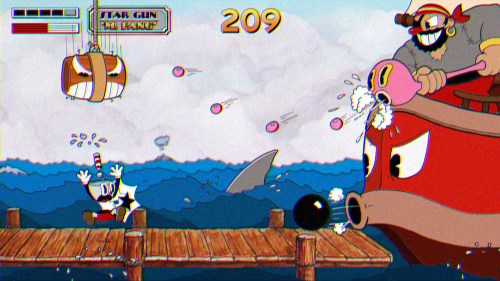
I don’t think I’m overstating anything when I say this: There is no more exciting game on the horizon than Cuphead.
Game trailers suggest a fluid, stylish 2D run-and-gun platformer, one that filches its aesthetic wholesale from classic cartoon animation: From the swinging noodle-arms, to the swinging jazz, to the psychedelic anthropomorphism, Cuphead authentically pins down the 1930s.
Outside of the rare Alien Hominid or Viewtiful Joe (and Earthworm Jim before them), it’s almost unthinkable that so few developers have attempted to apply traditional animation techniques to videogames. There’s an understood gruesomeness and morbidity to cartoons, and especially to the early-20th-century ones: Death is impermanent, which is comedic in and of itself. Flattened characters are revived with a single puff of air; health is regained by swallowing canned spinach whole; cartoon characters return, unscathed, from Hell. All of this is to say, videogames share a great deal in common with the comic brutality of cartoons—videogame violence is inherently funny, both because it’s over-the-top, and because it doesn’t last—and it’s astonishing that so few designers ever make that connection.
Anyway, Cuphead looks great.
Below

Announced in 2013—as an Xbox One exclusive, and as no less than Microsoft’s E3 show-stopper that year—Below has the unenviable task of outperforming already-sky-high expectations. Worse, studio Capybara’s last two titles were Sword and Sworcery and Super Time Force, two of the most provocative titles in recent years. Can lightning strike a third time in a row?
No doubt capitalizing on Sword and Sworcery’s success, Below is also a roguelike, and it, too, will feature a soundtrack by musician Jim Guthrie (which alone should be enough to get some people excited). But silence will also figure prominently into the game—according to previews, Below is deliberately light on any explanatory text—and the designers additionally guarantee “brutal” gameplay.
The rest is shrouded in mystery but, considering the extent to which the Xbox One is apparently banking on it, Below ought to be good. Time will tell.
Sherlock Holmes: The Devil’s Daughter

Strange to say, but true: Sherlock Holmes is so hot right now. Between movies, TV shows, and entirely new novelizations, A.C. Doyle’s esteemed “consulting detective” is clearly alive and well, after all.
In 2014, Frogwares’s Sherlock Holmes franchise finally released a game befitting the titular crime-fighting Victorian, with the elegant and compelling Sherlock Holmes: Crimes and Punishments. An unexpectedly robust, decidedly un-”casual” entry in the longrunning point-and-click adventure series, Crimes turned Holmes’s deductive powers into concrete play mechanics, all while gamifying morality itself. It was an ambitious game, to say the least.
Devil’s Daughter will have to pull off a Moriarty-scale swindle if it ever presumes to outdo Crimes and Punishments. But Frogwares definitely has a good thing going, here; I’m looking forward to seeing whether the team can repeat Sherlock’s success.
Hyper Light Drifter
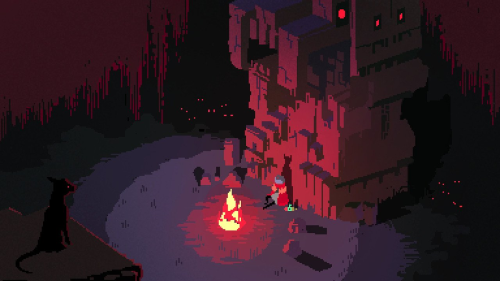
Interest in Hyper Light Drifter is, in a word, piqued—the game stands as one of Kickstarter’s most remarkable success stories, surpassing its initial funding goal within the very first day—and all of this early enthusiasm, however premature, appears to be deserved. Rarely can pixel art be described as “sumptuous,” yet Hyper Light Drifter absolutely nails its crunchy aesthetic. (It helps that the soundtrack, all crackling moody atmosphere, is provided by Disasterpeace.)
Citing Diablo and SNES-era Zelda as its mechanical influences, the game strives to combine top-down action-adventure with personal, autobiographical narrative elements—including the sobering reality of designer Alex Preston’s own chronic illness.
Those same health issues have regrettably lengthened Hyper Light Drifter’s development time (the game was first announced in 2013). Fortunately, most fans are understanding and willing to wait. For now, the game expects to launch this year.
No Man’s Sky
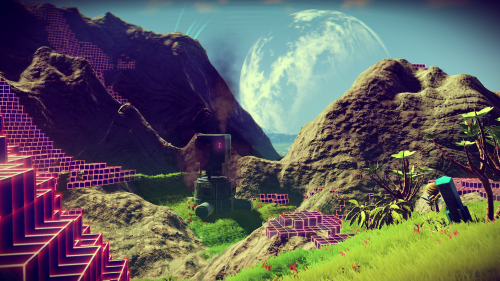
Of all the late-night talk-show hosts—Fallon, Conan, possibly Kimmel, all of whom evidently love and play videogames—is there a harder person to impress, a tougher sell, than Stephen Colbert? If so, that singular distinction belongs to No Man’s Sky. Designer Sean Murray of Hello Games visited Late Night to promise America a playable, explorable, procedurally-generated universe (comprised of “18 quintillion planets,” to be exact). Murray’s presentation was thoroughly convincing; the live televised audience’s awed gasps and cheers do the promotional work of a quintillion E3s.
My own excitement is tempered by apprehension. There was, of course, 2008’s Spore, conceived by Will Wright as a technological marvel. That “God game” sim was ultimately spoiled, not by any one grievous flaw, but by sheer expectation itself. Perhaps more troublingly, certain aspects of No Man’s Sky will necessarily require a persistent online connection—a condition that ultimately injured SimCity (2013, another underwhelming title from Maxis).
But if No Man’s Sky accomplishes even half of whatever it aspires to achieve, it will be a bonafide hit. And that is electrifying.
The Last Guardian
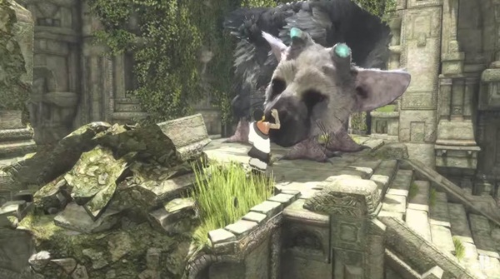
I hate to be a cynic but, ugh, good luck.
Not so much “anticipated” as it is “a rallying point for the entire games industry,” The Last Guardian—from Fumito Ueda, the mind behind modern classics Ico and Shadow of the Colossus—has allegedly been in the works since 2007. (It was un-canceled, to much ballyhoo, last year. Please don’t break my heart again, Sony.)
In 2013, WIRED’s Chris Kohler lamented the games industry’s “vaporware problem,” noting our collective, enduring need to cling to arbitrary release dates as if they ever really mean anything. They don’t, obviously—release dates are oftentimes dishonestly urgent, just another way of needling fervor and hustling preview coverage along—but damned if we aren’t all prisoner to those false hopes anyway.
And yet…! Maybe the joy of videogames, of loving videogames, is in that unbridled eagerness, in the doe-eyed exhilaration that comes of entertaining what-might-be. If videogames themselves are about possibilities and potential, then, hell, it’s all right to dwell on the future, isn’t it?
In a sense, that anticipation—that excitement we feel as we construct the best possible videogame in our minds, mental manifestations that trailers and screenshots and previews can only occasionally live up to—is its own magnificent “creative process.”
In other words, anticipation—that hope, expectation, thrill, even the spurned preconceptions—makes game designers of us all.
Jenn Frank is Paste’s assistant games editor.